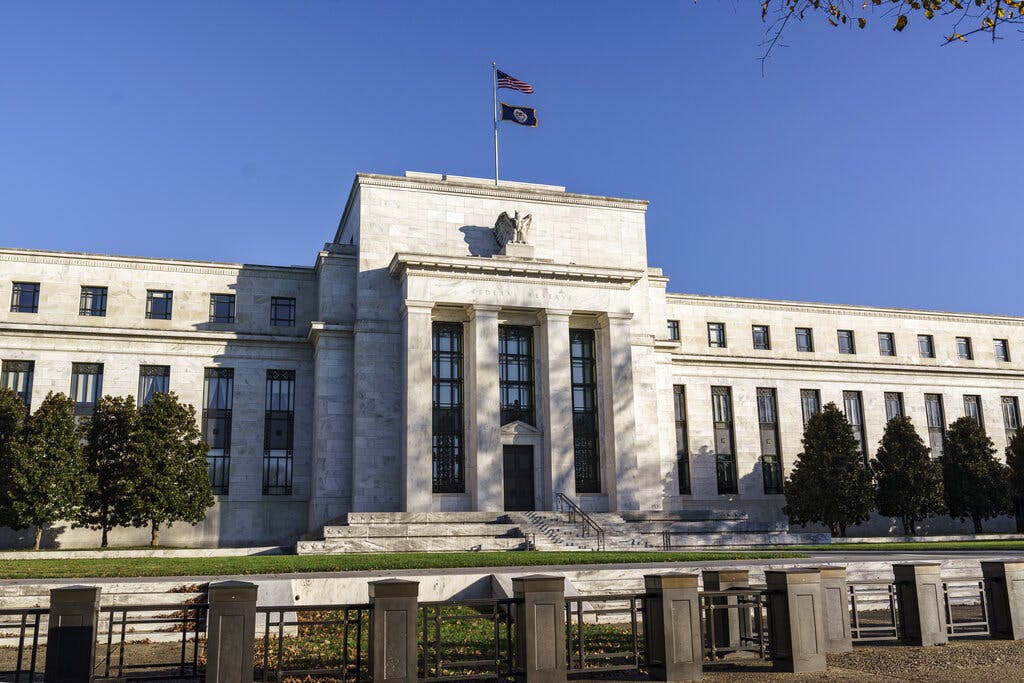Has Anyone Thought About Recapitalizing the Fed, Which Is Underwater by Billions of Dollars?
The answer is ‘yes’ — the authors of the Federal Reserve Act, for starters.

The Federal Reserve seems to many people to be a mysterious power, something like the Wizard of Oz in the classic movie version of the story. Yet the Federal Reserve Banks are banks, with assets, liabilities, capital, and profits and losses like other banks. What stands out in the last year and a half are the losses — totaling a staggering sum, $149 billion. The FRBs, in other words, have run through about 3.5 times their total capital.
The Fed’s real capital as of mid-February 2024 is its stated capital of $43 billion minus the losses of $149 billion, or by ineluctable arithmetic a negative $106 billion. The Fed disguises this in its published financial statements by booking its losses as an asset. Luckily for it, the Fed is not an SEC filer. It is a striking irony that the greatest central bank in the world feels compelled to fall back on issuing questionable financial statements.
One would like to think that America’s central banking system would be an exemplar of financial probity. Particularly the Federal Reserve Bank of New York. Of the 12 FRBs, the largest and most important is the New York FRB, which is bigger than the other 11 put together. With its losses of $95 billion, it is also far and away the leader in losing money.
The Fed’s astronomical losses, which continue at the rate of $2 billion a week, have resulted from its taking and imposing on both the Treasury and the taxpayers, as well as on itself, the massive financial risk of investing long and borrowing short to the tune of trillions of dollars. So now it, and the Treasury and the taxpayers, are upside down in a huge, long lasting trade which earns interest at about 2 percent and pays interest at more than 5 percent.
The Federal Reserve’s balance sheet release for February 14 allows an update on the actual capital of each Federal Reserve Bank and of the total Federal Reserve, also showing the accumulated losses of each as a percentage of its stated capital.
It portrays losses of a magnitude that would previously have been considered impossible by everybody. Note that these numbers do not count the approximately $1 trillion in mark to market losses the Fed has suffered on its investments — only the cash losses from operations are included.
The Fed as a whole and eight of the 12 FRBs are technically insolvent, with liabilities greater than their assets. Two other FRBs have reported losses totaling 83 percent and 94 percent of their capital, with losses continuing. With combined assets of $7.6 trillion and negative capital, the Fed has infinite leverage. The capital deficit is growing bigger at an annualized rate of more than $100 billion a year.
Did anyone ever think about how to recapitalize a Federal Reserve Bank which is short of capital? The answer is Yes. The authors of the Federal Reserve Act did and provided for it in the Act. The commercial bank members of the Fed are the sole stockholders of the FRBs, and the Act looks to them to contribute new capital.
The member banks have all purchased only half of their statutory commitment to buy FRB stock. The other half is callable at any time by the Fed. That would be a capital call on the member banks of $36 billion. In addition, the banks are liable to be assessed up to twice their current capital to make good losses of their FRBs. That would not be a purchase of stock, but simply money paid to the Fed to offset losses. The aggregate sum involved could be a $68 billion assessment.
Imagine the outraged comments of banks that were required to make good on their legal commitments as shareholders of FRBs under the Act. Perhaps many of them have never thought about what their exposure is under the law, and will be surprised to learn.
Is the Fed willing to recapitalize itself by following the statutory provisions? Presumably not. It would be humiliating for the Fed, of course, and also it would make the member banks angry. Perhaps the Wizard of Fed will simply stick to the line, “Pay no attention to the man behind the curtain.”

